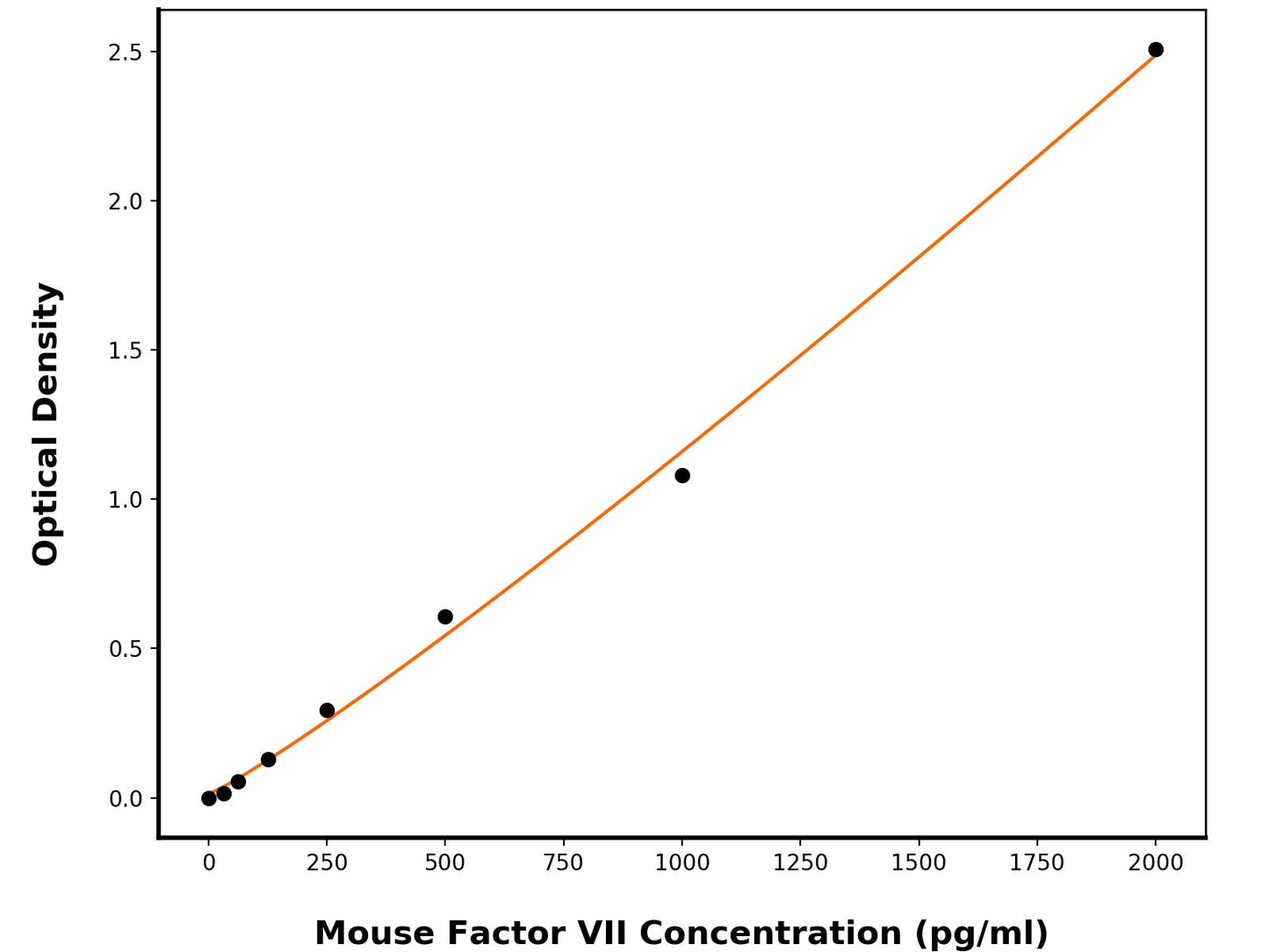1
/
of
1
Mouse Coagulation Factor Vii (F7) ELISA Kit
Mouse Coagulation Factor Vii (F7) ELISA Kit
This ELISA kit is designed to detect Mouse Coagulation Factor Vii (Mouse F7). The assay plate has been pre-coated with mouse anti-Mouse Factor VII monoclonal antibody. When the sample containing Factor VII is added to the plate, it binds to the antibodies coated on the wells. Then, a horseradish peroxidase conjugated mouse anti-Mouse Factor VII Antibody is added to the wells and binds to Factor VII in the sample. After washing the wells, substrate solutions are added, and the color intensity is directly proportional to the amount of Mouse Factor VII present. The reaction is stopped by adding an acidic stop solution, and the absorbance is measured at 450 nm.
Catalog No:
BPE283
Regular price
$754.00 USD
Regular price
$580.00 USD
Sale price
$754.00 USD
Unit price
/
per
2 weeks
Couldn't load pickup availability
Product Details
Species Reactivity
Mouse
Sensitivity
10.38 pg/mL
Detection Range
31.25-2000 pg/mL
Sample Type
Serum, plasma, cell culture supernates
Incubation(s)
3.5 hour(s)
Research Areas
Cardiovascular
Background
Coagulation factor VII, also known as Serum prothrombin conversion accelerator, Factor VII, F7 and FVII, is a member of the peptidase S1 family. Factor VII is one of the central proteins in the coagulation cascade. It is an enzyme of the serine protease class, and Factor VII (FVII) deficiency is the most frequent among rare congenital bleeding disorders. Factor VII contains two EGF-like domains, one Gla (gamma-carboxy-glutamate) domain and one peptidase S1 domain. The main role of factor VII is to initiate the process of coagulation in conjunction with tissue factor (TF). Tissue factor is found on the outside of blood vessels, normally not exposed to the blood stream. The action of the Factor VII is impeded by tissue factor pathway inhibitor (TFPI), which is released almost immediately after initiation of coagulation. Factor VII is vitamin K dependent and is produced in the liver. Upon vessel injury, tissue factor is exposed to the blood and circulating Factor VII. Once bound to TF, FVII is activated to FVIIa by different proteases, among which are thrombin (factor IIa), factor Xa, IXa, XIIa, and the FVIIa-TF complex itself. Recombinant activated factor VII (rFVIIa) is a haemostatic agent, which was originally developed for the treatment of haemophilia patients with inhibitors against factor FVIII or FIX. FVIIa binds specifically to endothelial protein C receptor (EPCR), a known cellular receptor for protein C and activated protein C, on the endothelium. rFVIIa is a novel hemostatic agent, originally developed for the treatment of hemorrhage in hemophiliacs with inhibitors, which has been successfully used recently in an increasing number of nonhemophilic bleeding conditions.
Shipping Condition
Shipped on cold gel packs.
Storage Condition and Shelf Life
This product can be stored at 2-8C.
Analyte
Coagulation factor VII
Regulatory Status
For Research Use Only

